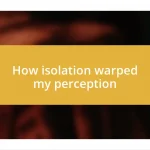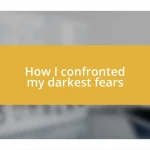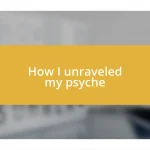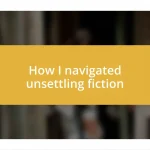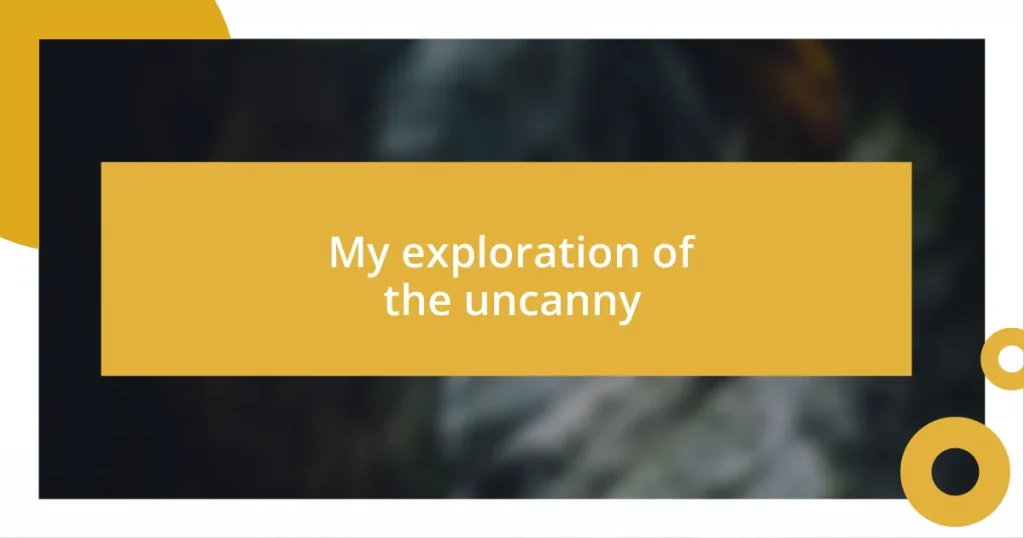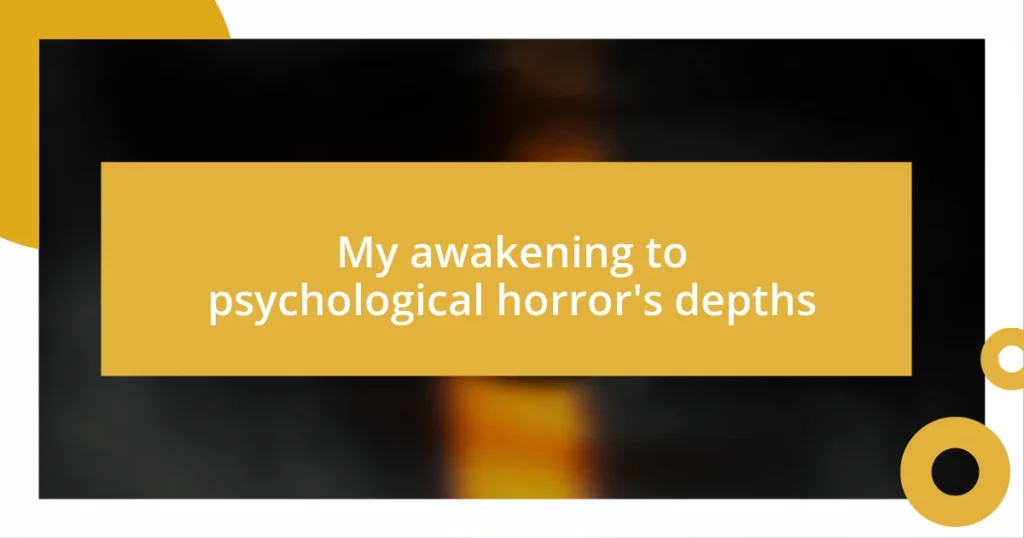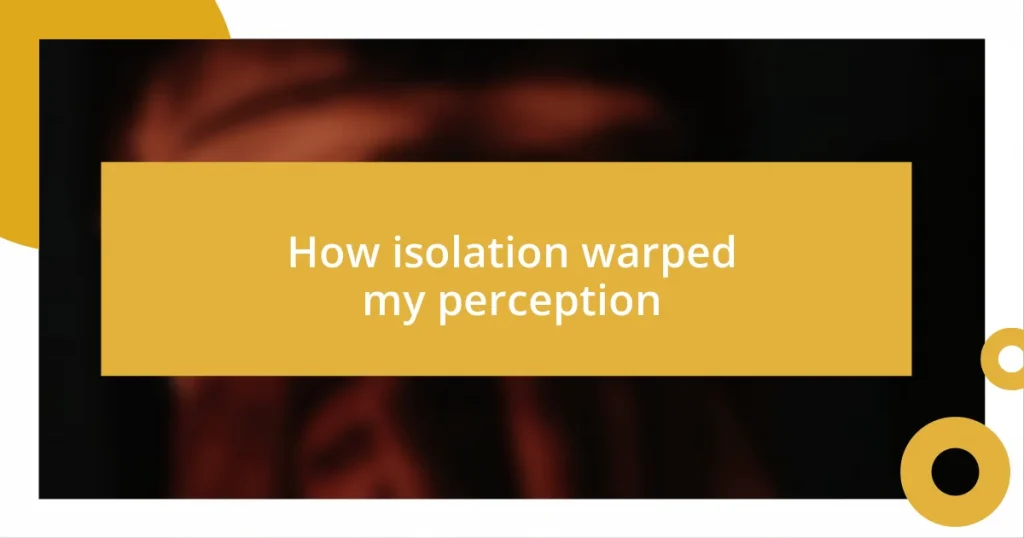Key takeaways:
- The uncanny evokes unsettling feelings by intertwining familiarity with eeriness, often found in everyday experiences and reflective moments.
- Historically, the uncanny has roots in Freud’s analysis of repressed emotions, Gothic literature’s unsettling atmospheres, and existential philosophy questioning identity and reality.
- Cinematic portrayals of the uncanny play with primal fears, distorting perceptions of reality and exploring themes of connection and isolation, as seen in films like “The Shining” and “Her.”
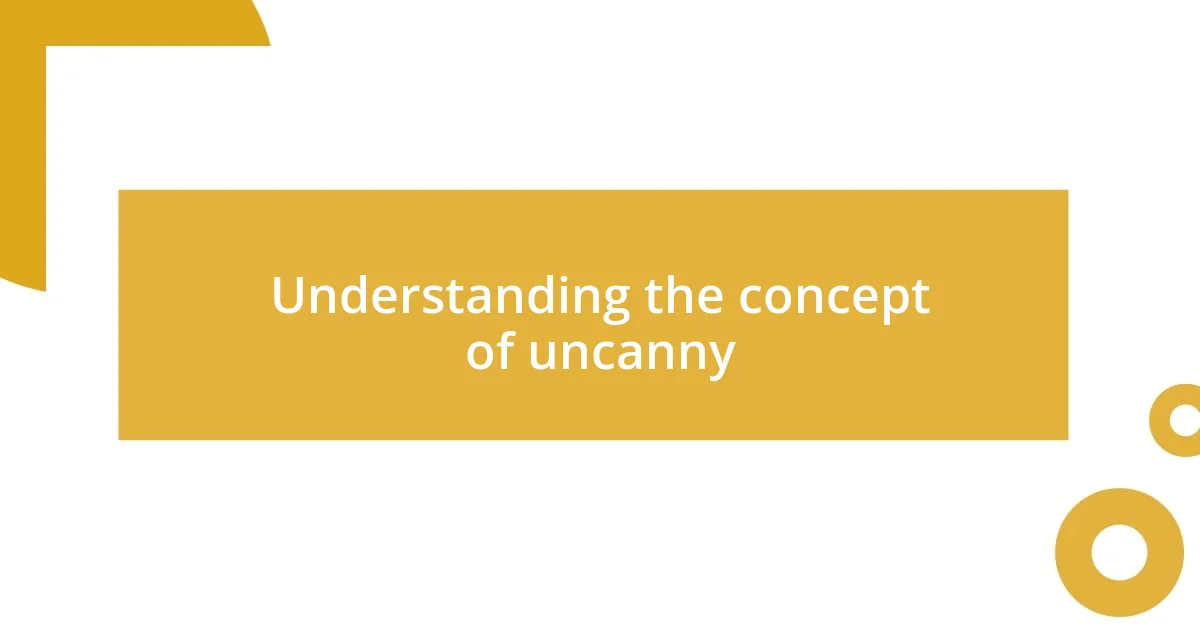
Understanding the concept of uncanny
The uncanny is that unsettling feeling when something familiar suddenly turns strange. I still remember the first time I encountered it while watching a horror film; a character’s smile seemed all too genuine, yet something lurking behind it felt off, almost ghostly. It’s that chill that crawls down your spine when you recognize something but can’t fully grasp why it makes you feel uncomfortable.
Often, the uncanny thrives in the familiar; it takes our everyday experiences and twists them into something unexpected. Think about your childhood toy that you once adored but now appears eerily lifelike after all these years. Why does that evoke such a profound sense of nostalgia and discomfort? It’s this blending of comfort with the eeriness that captivates and perplexes us.
Have you ever walked down a street and felt like you were being watched, only to discover it was just a realistic statue? That moment illustrates the uncanny perfectly. It’s this delicate balance between reality and strangeness that keeps us questioning our perceptions, reminding us that there’s much more beneath the surface of our everyday lives.
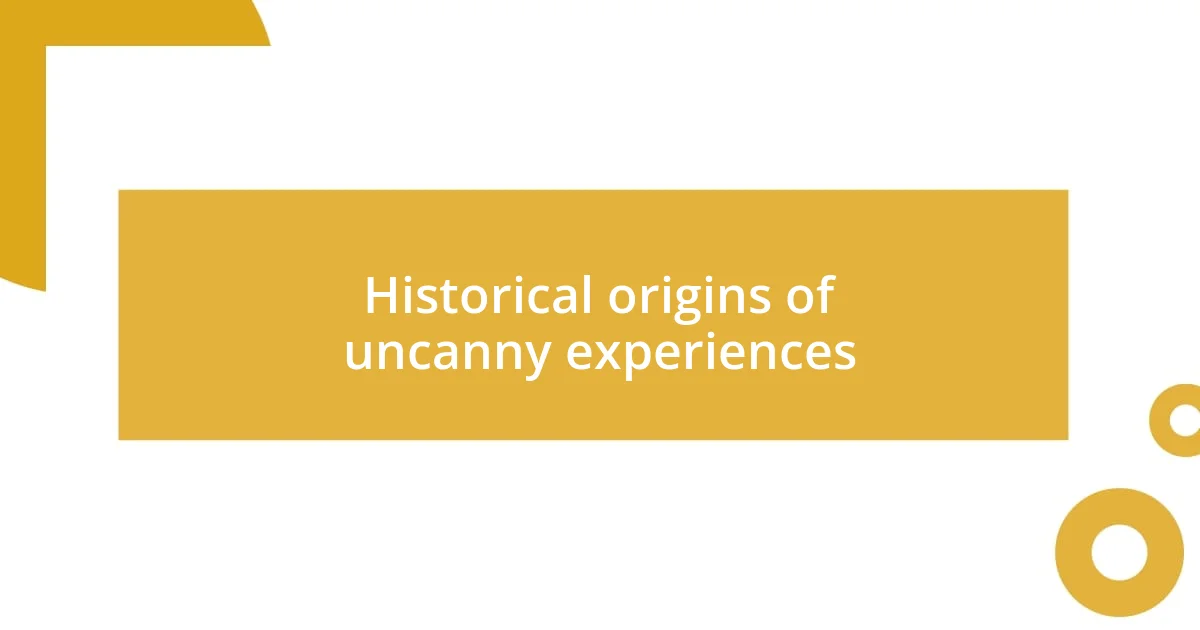
Historical origins of uncanny experiences
The historical origins of uncanny experiences are deeply rooted in literature and philosophy. Sigmund Freud’s essay on the uncanny in 1919 delves into this phenomenon, revealing how it relates to repressed memories and emotions. This resonated with me as I think back to how childhood fantasies sometimes blend with later fears, leaving me to navigate that blurred line between pleasure and discomfort.
Exploration of the uncanny can also be traced to early Gothic literature, where authors like Edgar Allan Poe conjured unsettling atmospheres through familiar yet haunting settings. I recall reading “The Tell-Tale Heart” as a teen and feeling an eerie connection to the protagonist’s anxiety. The story illustrated how a simple heartbeat could morph into a more sinister force in one’s mind, echoing Freud’s thoughts on the familiar becoming strange.
In philosophy, the uncanny ties to existential questions about identity and reality. The dissonance between who we are and how we perceive ourselves can create a feeling of dislocation. I remember a time when I gazed into a mirror and felt like a stranger, as if the reflection was familiar and yet foreign, capturing that unsettling sense of the uncanny.
| Origin | Key Contributors |
|---|---|
| Freud’s Analysis | Sigmund Freud |
| Gothic Literature | Edgar Allan Poe, Mary Shelley |
| Existential Philosophy | Emmanuel Levinas, Martin Heidegger |
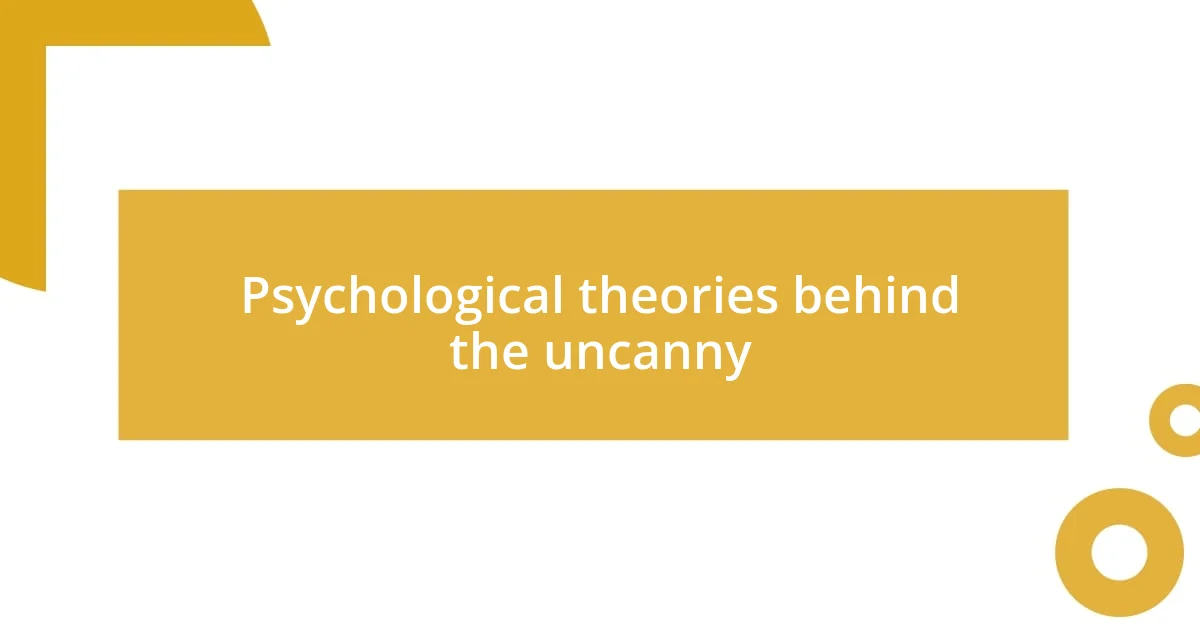
Psychological theories behind the uncanny
The psychological theories behind the uncanny offer fascinating insights into our emotional responses. I find it intriguing how theories about the uncanny often relate to our internal conflicts and fears. For instance, when we face a reflection of ourselves that feels almost right yet distinctly wrong, it can evoke feelings of disconnection. This reaction serves as a reminder of our hidden anxieties, as if our mind is playing tricks on us and tugging at the threads of our deeper psychological fabric.
Consider these key psychological perspectives on the uncanny:
- Freud’s Theory: Sigmund Freud posits that the uncanny emerges from repressed memories and emotions surfacing unexpectedly, which can lead to an unsettling experience.
- Carl Jung’s Archetypes: Jung introduces the idea of archetypes, suggesting that certain recognizable symbols may resonate with internal fears, making the familiar seem haunting.
- Confirmation Bias: This theory explains how we perceive strange occurrences through the lens of our expectations, which can amplify feelings of the uncanny if something seems almost familiar yet slightly off.
Reflecting on my own experiences, I recall encountering an impeccably crafted mannequin that felt eerily lifelike. This encounter stirred a mix of admiration and discomfort within me. It reminded me of how our mind struggles to reconcile the beauty of human-like features with the unease of encountering something that isn’t quite human.
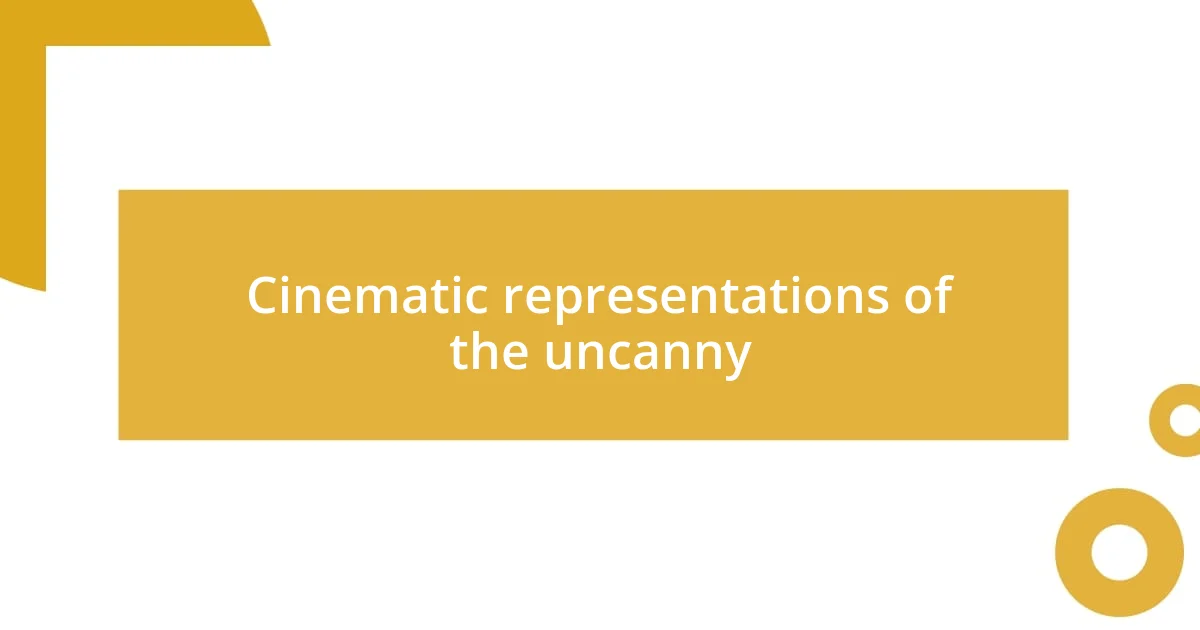
Cinematic representations of the uncanny
Cinematic representations of the uncanny often tap into our most primal fears, creating an unsettling yet captivating experience. Films like “The Shining” illustrate this beautifully, where the familiarity of a family hotel transforms into a labyrinth of madness. I remember watching it late at night, the eerie silence amplifying my heartbeat as I became enveloped in its haunting atmosphere—each flicker of light felt like a whisper of my own hidden anxieties.
What strikes me about films that explore the uncanny is their ability to distort our perception of reality. Take “The Sixth Sense,” for example; the notion of seeing dead people intertwines innocence with horror. I could empathize with Cole’s struggles, feeling that same blend of trepidation and fascination when encountering things in my life that defied logic. It raises a compelling question: how often do we face something that feels disturbingly familiar yet remains beyond our comprehension?
The uncanny not only lingers in chilling visuals or unsettling narratives; it also takes shape in characters who echo our own fears. In “Her,” the relationship between Theodore and an artificial intelligence blurs the lines of connection and isolation. This film left me wondering about the nature of love and reality—can we forge genuine bonds with entities that reflect back our innermost desires yet remain fundamentally different? It’s a thought-provoking dilemma that resonates deeply within the uncanny’s framework, inviting viewers to confront discomforting truths about themselves.


